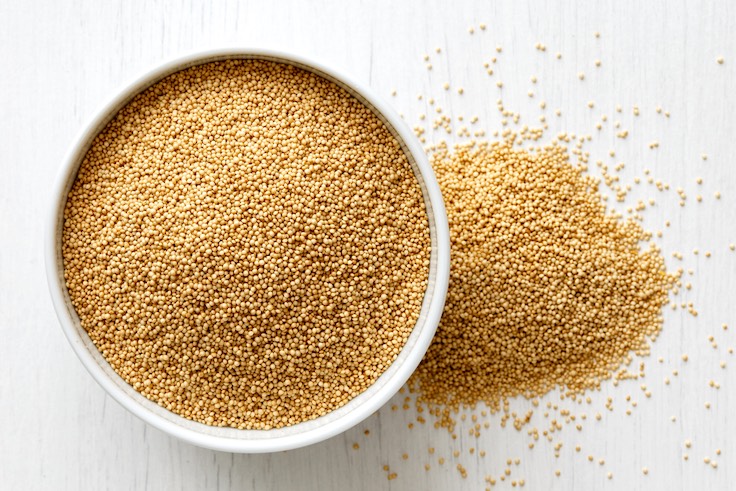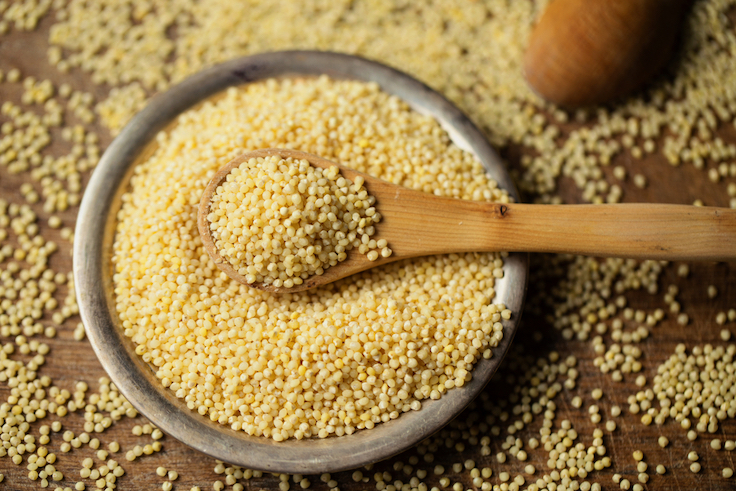Grains have long been a staple of many diets. They provide carbohydrates, and when you consume whole grains (meaning they have not been refined to have the husk and endosperm removed) you also get a good amount of important nutrients like fiber, B-vitamins, iron and selenium.
An important attribute for some is that a number of grains also contain gluten, which is a family of proteins found in foods such as wheat, barley, rye and spelt, and is responsible for the texture people love in breads and pastas. However, some people's bodies are not able to digest gluten and a growing number of others have shunned it from their diets for other reasons.
Celiac disease, an autoimmune form of gluten intolerance which causes damage to the small intestines, is estimated to impact 1 to 2 percent of the population. Some common symptoms may include gastrointestinal discomfort like diarrhea, gas and bloating, weight loss, or mental health issues like depression. Some people may experience no symptoms at all. Untreated celiac disease may lead to malabsorption of nutrients, infertility and impaired immune system function. Non-celiac gluten sensitivity may be diagnosed in individuals who do not have celiac disease or wheat allergy but who have similar symptoms after consuming gluten-containing grains, which improve when gluten is removed from the diet.
Rice and corn are two of the most common gluten-free grains, but there are a whole bunch of others to try. Whether you consume gluten or not, check out these gluten-free grains to add to your diet.

Amaranth
Thought to be native to Peru, the name for this ancient grain comes from the Greek amarantos, "one that does not wither," or "the never-fading." Amaranth works well with both sweet and savory flavors. It can be cooked in liquid until tender but it will still be chewy. Try it in grain-based salads and stir-fry dishes, or as a hot breakfast cereal. It can also be popped to make a whole grain snack or dry cereal.Because amaranth is 74% carbohydrate, 13% protein and 13% fat, it's a richer source of protein than many other grains. Additionally, because it contains essential amino acid lysine, which is not present in most grains, amaranth is also considered a complete protein, meaning it provides all nine of those essentials. A one-ounce serving also provides about 12 percent of your daily needs for antioxidant manganese.

Millet
Millet has been cultivated for thousands of years and it's even thought that millet was the staple grain in Asia before rice took its place. Millet grains are typically small and golden yellow, with a mild flavor that's incredibly versatile. Like amaranth, millet can be eaten cooked in liquid or puffed or popped. It works well in salads or grain bowls, and may also be enjoyed as a breakfast cereal. It can also add texture to soups and stews or baked goods like bread and cookies. Millet flour may also be used in baked goods. In India, ragi (finger millet) is used to make a flat bread called roti.Millet is high in antioxidant activity, thanks to the hefty dose of manganese—a half-cup of cooked millet provides 12% of your daily needs. You'll also get almost 10% of your daily magnesium needs covered in a half-cup, which is important for normal muscle and nerve function. It's also a rich source of B-vitamins and provides immune-boosting zinc.

Oats
While oats are inherently gluten-free, there is a lot of cross-contamination between wheat and oat crops. To make sure you're getting a gluten-free product, look for a "certified gluten-free" label. Oats are generally available in steel-cut, rolled or instant form, all of which can be ground into flour. Oats can be enjoyed for breakfast with sweet or savory twists. They also make a great substitute for breadcrumbs in recipes like meatloaf and meatballs.Oats are noted for their fiber content (about 3 grams per serving), and they also provide over half your daily manganese needs as well as about 10 percent of your needs for magnesium and phosphorous, as well as antioxidant selenium.

Sorghum
Sorghum has a neutral flavor and light color that makes it a versatile grain. There are many types of sorghum grown throughout the world. Brown, bronze and white are the most common, but pale yellow, deep red and purple may also be found. Unlike many grains, sorghum does not have an inedible hull that needs to be removed and is instead eaten with all its layers intact, helping retain its nutrients. The grains come in a variety of shapes and sizes and are a pleasant addition to soups, grain dishes, salads and more.One ounce of sorghum provides plant-based iron (about 7% of your daily needs) as well as 2 grams of fiber. It also provides important B-vitamins.

Teff
This tiny grain (less than 1 millimeter in diameter) originated in Africa (Ethiopia, specifically), and can thrive in a variety of climates ranging from wet soils to dry areas, and from very low to very high altitudes. It takes a very small amount of seed to yield a large crop that sprouts within a few days and cooks quickly.The bran and germ make up a large part of the teff grain, so it's eaten whole rather than processed. Lighter colored teff tends to have a milder flavor than the darker varieties, but in general, it has a neutral, slightly sweet flavor. Teff is most commonly used in flour form. In Ethiopia, for example, teff flour is typically fermented to make injera, a spongy sourdough-like bread that serves as an edible plate. The flour may also be added as a thickening agent to soups, stews and sauces. Teff grains can be soaked in water and eaten as a crunchy-chewy addition to grain dishes, salads and soups, or eaten as a porridge. It also may be used in baked goods and cereals.
With 79% carbohydrate, 6% fats, 15% protein, teff is also considered very high in protein compared to other grains, with 5 grams per half-cup cooked. It also contains resistant starch, an indigestible starch that functions somewhat similarly to soluble fiber in the body and has been shown to benefit digestive health, insulin sensitivity, blood sugar management and appetite control. Teff also provides a variety of key B-vitamins.









